Learn how to make a hot matcha latte at home that’s creamy, perfectly sweetened, and costs a fraction of what you’d pay at your local coffee shop! This easy recipe will have you sipping vibrant green tea goodness in less than 10 minutes.
Want it iced? Check out our full post on making an Iced Matcha Latte!
Why You’ll Love This Classic Matcha Latte Recipe
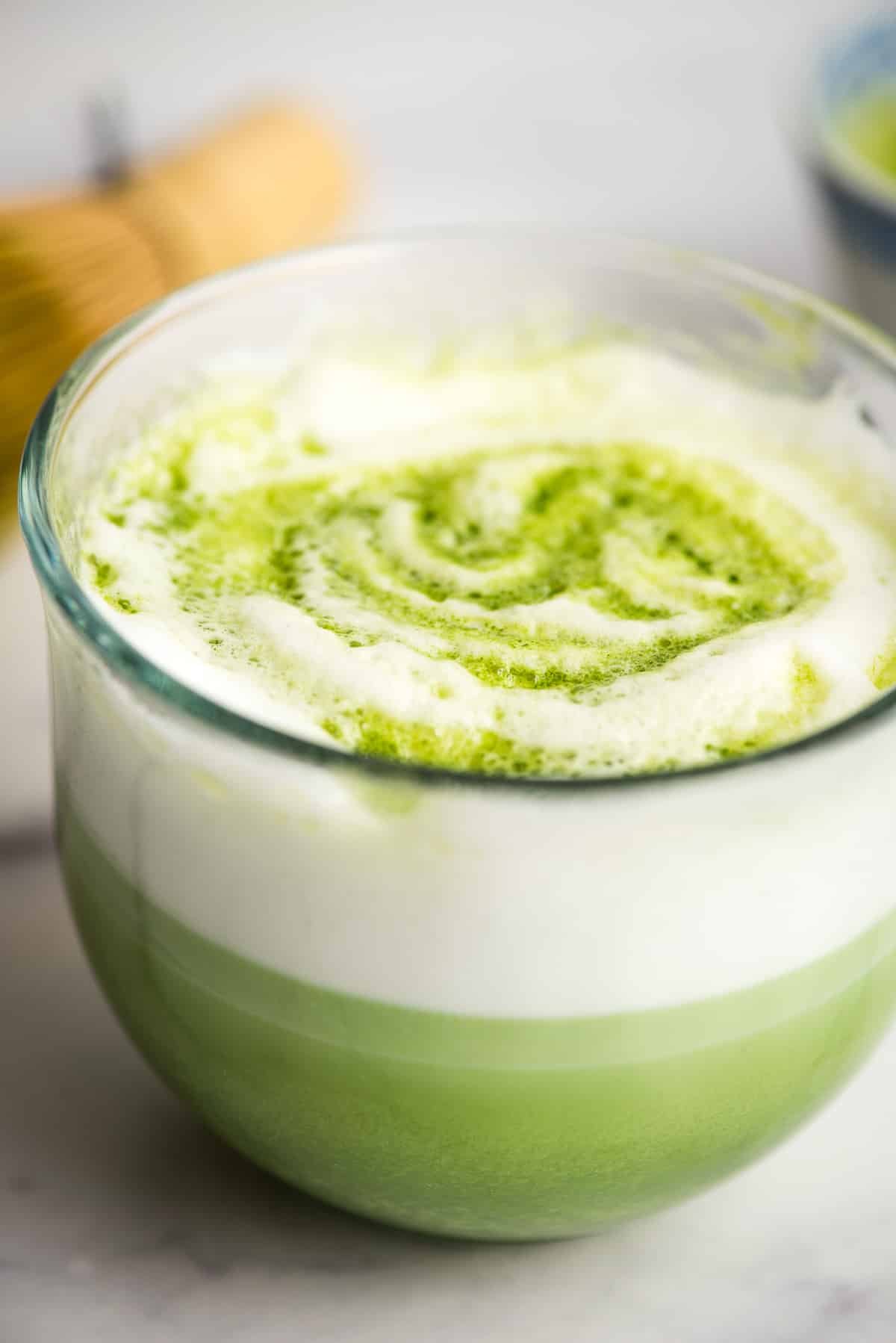
Table of Contents
Ever since I learned how to make tea lattes, I’ve been wanting to try my hand at a homemade matcha latte recipe. I love the flavor of matcha green tea. It’s less acidic than coffee and has a pleasant, mellow earthiness which I find both calming and refreshing.
After being disappointed by my overly-sweetened, grainy $6 coffee shop matcha again, I decided it was time to learn to make them myself. Luckily, with just a little care and 10 minutes of time, you can make deliciously rich and creamy matcha lattes at home! Best of all, they clock in at half the sugar and 1/3 of the price of a Starbucks matcha latte!
Foamy hot matcha lattes are a morning coffee alternative that’s absolutely worth mastering. I’ve been making homemade matcha almost every day for years now. If you’re looking for a drink with less caffeine but a sustained energy boost to start your day, this is it!
We’ve also got all the tips for customizing your latte with homemade syrups like vanilla syrup or honey syrup to take your drinks to the next level!
Ingredients You’ll Need
This hot Matcha latte recipe is made with four basic elements:
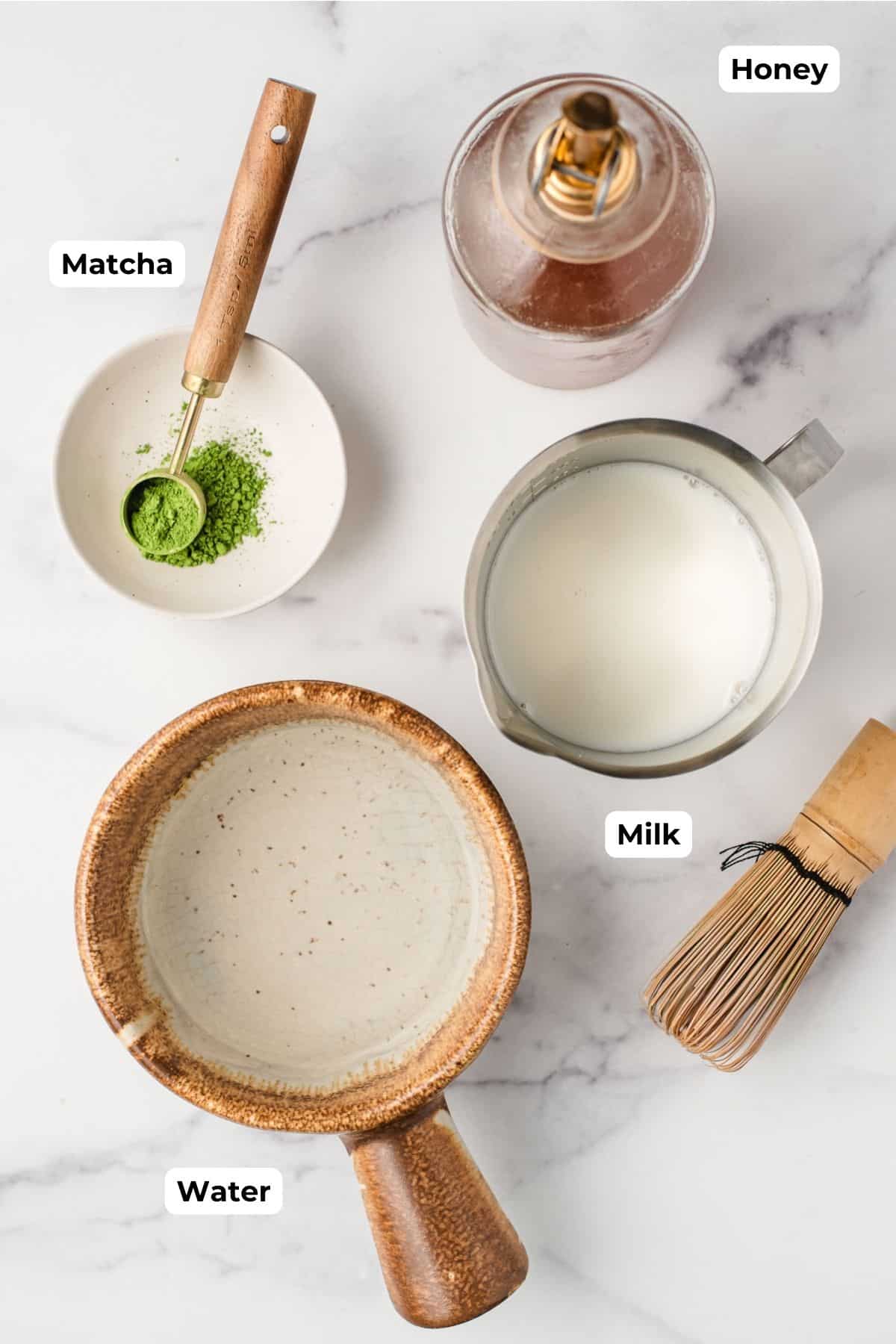
- Matcha powder– Look for high-quality matcha green tea powder that has a vibrant green color and is sourced from Japan. Ceremonial-grade matcha provides the smoothest flavor.
- Water– You’ll need just a small amount of hot water (not boiling!) to help dissolve the fine powder properly.
- Milk– Creates the creamy base of your latte. Whole milk produces the richest texture, but plant-based milk works beautifully too. Oat milk is a great non-dairy milk option that froths well.
- Sweetener– Sweetener is optional, but it helps balance matcha’s earthiness. My personal preference is to use maple syrup or honey, but regular green tea drinkers might enjoy the natural sweetness without additional sweetener. For a vanilla version, try my homemade vanilla simple syrup.
Special Equipment for Making Green Tea Lattes
These tools are not required but can be helpful for making matcha lattes.
- Matcha bamboo whisk (or chasen)- Designed to break up clumps and create foamy matcha. The multiple bamboo tines incorporate air into the fine powder when mixed with water.
- Milk frother– I use the frother that’s built into my Ninja Coffee Maker, but you can also use a hand held frother or an electric steamer/frother which both heats and froths the milk at one time!
- Mini sifter– Any fine mesh sieve will work just fine for this recipe, but these mini ones are great for a small amount of matcha and are also useful for dusting powdered sugar or cinnamon on desserts like Canestrelli Cookies or Blueberry Crepes.
- Matcha bowl– If you’d really like to nerd out, you can invest in a small matcha bowl (or chawan), which is specifically designed for matcha tea ceremonies. That said, you can absolutely use any small round bowl or bowl-shaped mug to whisk your matcha.
How to Make a Hot Matcha Latte at Home

Step 1: Heat the water to a simmer. The temperature should be around 175°F – hot but not boiling. Some people bring the water to a boil and then allow it to cool for 5 minutes.
Step 2: Sift the matcha powder through a fine mesh sieve into a matcha bowl or directly into a mug with a rounded bottom. Add the hot water and use a bamboo matcha whisk (or regular whisk) to combine, making an up and down “M” motion, until the mixture is smooth and a little frothy.
Step 3: Heat the milk to a simmer, then stir in your chosen sweetener. Froth until doubled in size using a milk frother or vigorously shake in a jar with a tight lid.
Step 4: Add the matcha to a mug, then add milk, or pour the milk directly into the mug with the matcha. Enjoy!
Recipe Variations
- Lavender Matcha Latte: Whisk 2 teaspoons of lavender syrup into the milk before frothing. This is a lovely spring tea!
- Vanilla Matcha: Add a splash of vanilla syrup to your milk for a subtly sweet flavor that complements matcha beautifully.
- Honey Matcha: Stir honey into the warmed milk, or use our honey syrup to make it easier.
- Dirty Matcha Latte: If you do want that extra caffeine, you can add a shot of espresso to this latte, or strongly brewed black coffee.
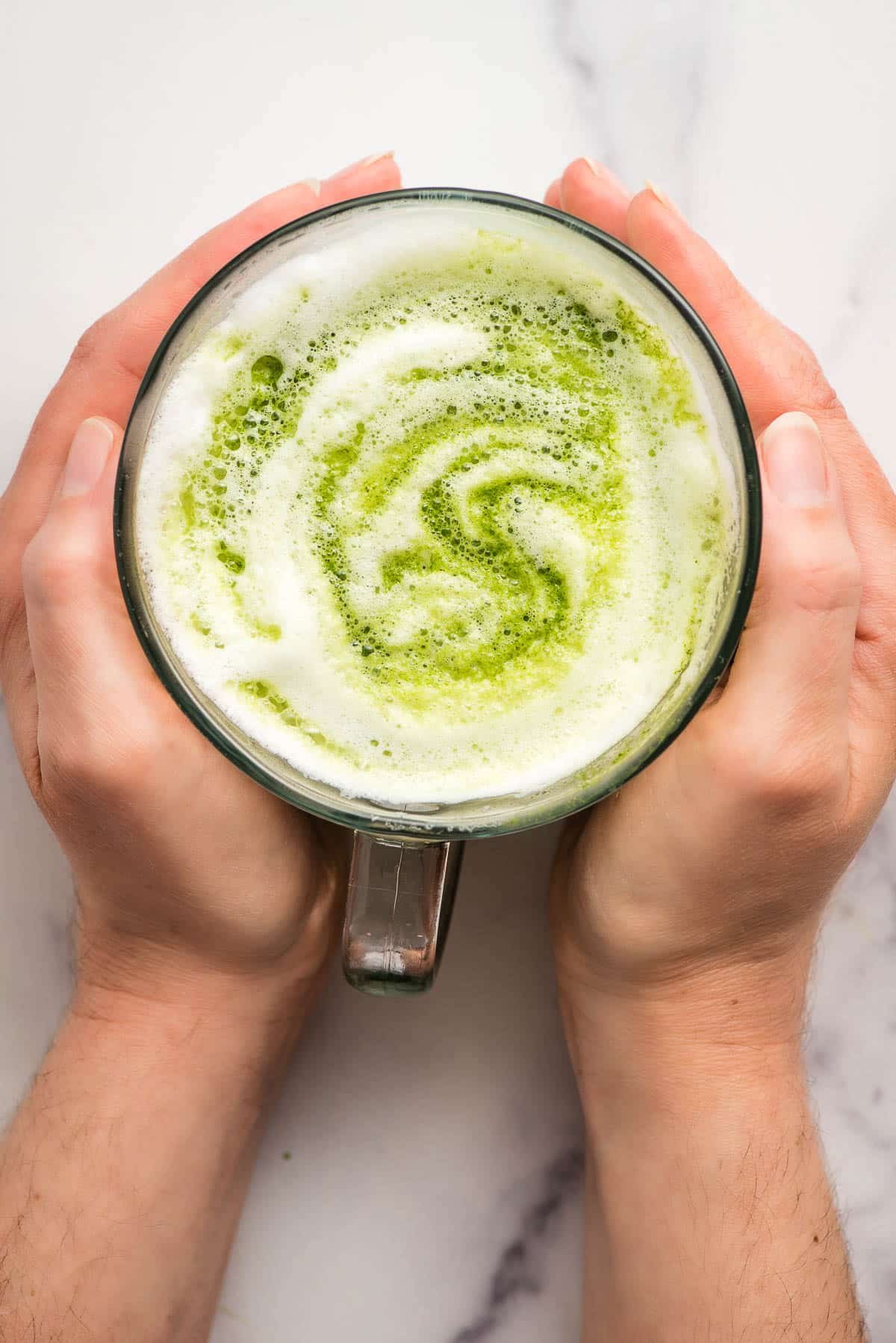
Recipe Tips for Matcha Success
- Water temperature matters. Never use boiling water with matcha, as it can make it taste bitter. A small amount of water at around 175°F is ideal.
- Sifting isn’t optional. This step prevents those unpleasant clumps that can ruin the texture of your latte.
- Store your matcha powder in an airtight container in a cool, dark place to maintain its bright color and fresh flavor. If you live in a very humid or hot climate, store matcha in the refrigerator.
- Experiment with the right ratio of milk. I find that more than 3/4 cup of milk tends to drown out the taste of the matcha, but you can increase it to 1 cup if you prefer. If you’d like to make a larger matcha latte with more milk, increase the matcha to 1 1/2 teaspoons.
Matcha 101
Unlike regular green tea leaves that are steeped and discarded, matcha is made from shade-grown green tea leaves with the entire leaf ground into a fine powder. This is why matcha contains higher concentrations of antioxidants and provides more sustained energy with less caffeine than your morning coffee.
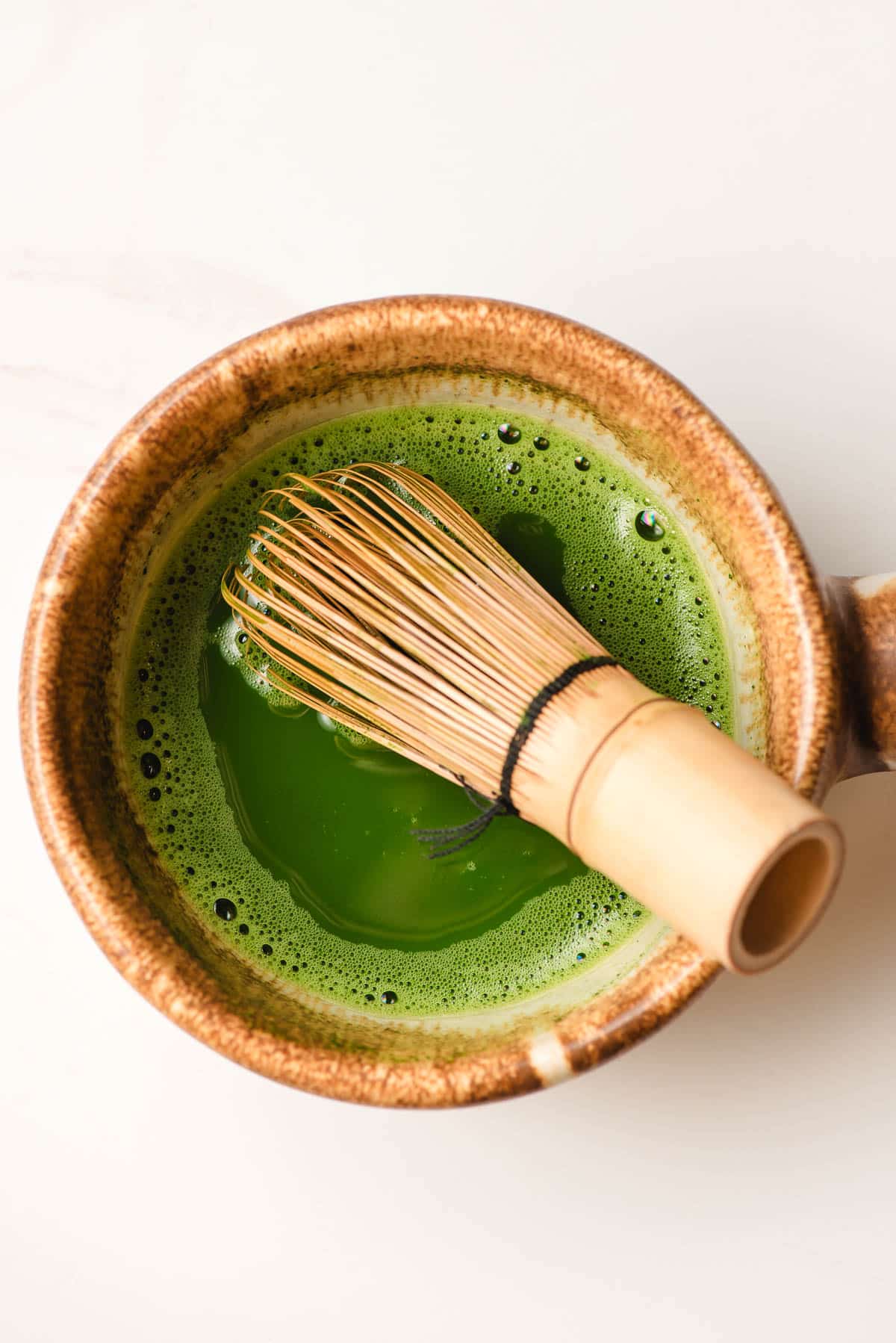
- According to this comprehensive overview of matcha, this special tea has been central to Japanese culture for nearly 900 years, first introduced by Buddhist monks who brought tea cultivation from China. In traditional Japanese tea ceremonies, matcha preparation is an art form centered around mindfulness and tranquility.
- As noted in this guide to frothy iced matcha, the whisking technique is crucial for achieving that perfect frothy texture, whether you’re making it hot or iced. Their experts recommend that “M” or “W” whisking motion to incorporate air and create a smooth, clump-free consistency.
The grade of matcha you choose makes a difference:
- Ceremonial grade matcha is the highest quality, with minimal bitterness, making it perfect for drinking straight or in lattes.
- Culinary-grade matcha is slightly more bitter and typically used for cooking or baking where other flavors mask any bitterness.
It’s best to find a matcha green tea powder that is:
- Made in Japan– The highest quality matcha comes from one of three regions in Japan, where it has been cultivated for over 900 years.
- Bright green color– High-quality matcha powder has an incredibly saturated green color. Cheaper matcha tends to be dull in color and bitter-tasting.
- Priced in the $20-$30 range for 1.5-2 ounces. I know, it sounds expensive, right? But for reference, you can make 20 matcha lattes with one bag of this Naoki matcha (my current favorite) which costs $26.99. That’s about $1.50 per latte (including the cost of milk)–still vastly cheaper than Starbucks! My other favorite matcha powders are Nio Teas’ Kyoto Matcha Masudaen and Ippodo Teas’ Ikuyo.
More Homemade Coffee Shop Drinks
Making your favorite coffee shop drinks at home means big savings! Splurge a little on your favorite syrups (or make them homemade), matcha, and ingredients because these drinks will still be a fraction of the price of a coffee shop, even with premium ingredients!
- If you love tea lattes, try this Homemade Chai Tea Concentrate! It makes an amazing hot or iced chai!
- You may also enjoy this Bailey’s Irish Coffee or Vanilla Iced Coffee with Coconut Milk.
- Want more ways to use matcha? Try it in this Matcha Lemonade or Matcha Honey Hot Chocolate.
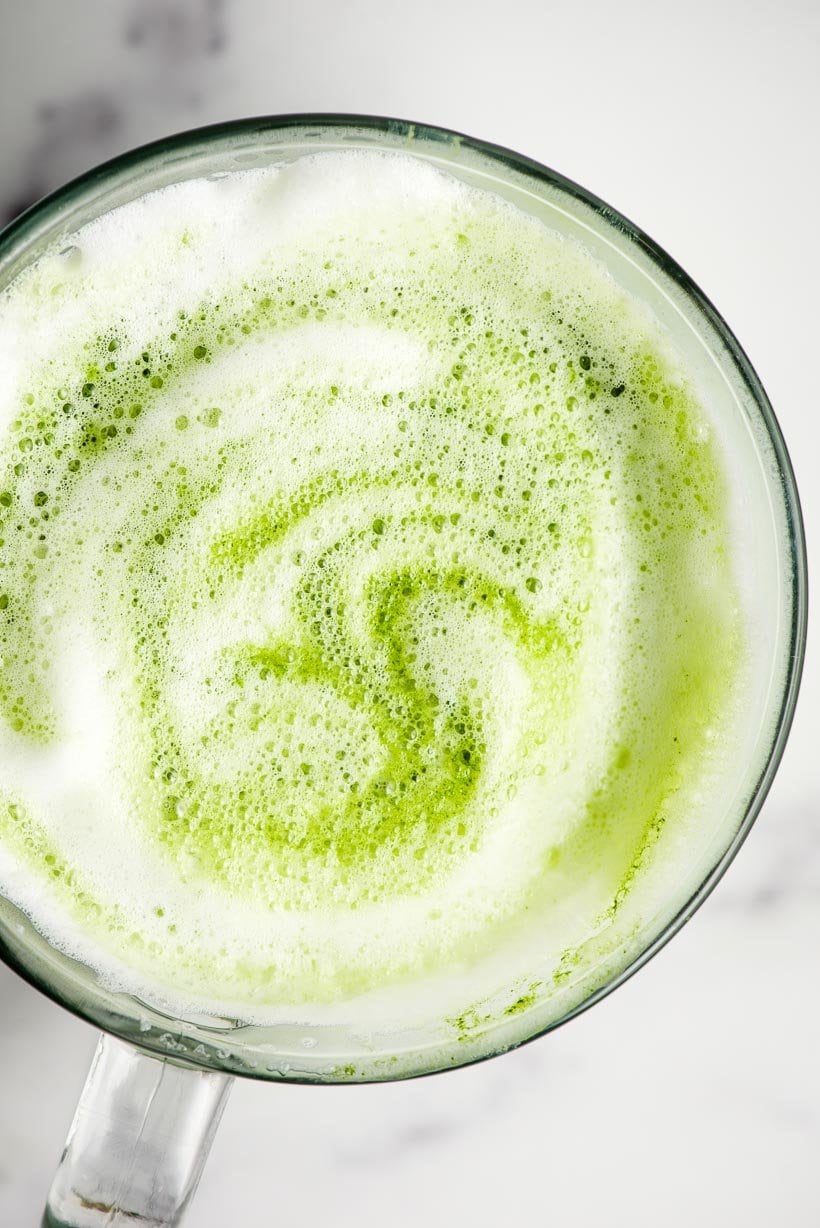
Recipe FAQs
Matcha contains about half the caffeine of coffee, making it a great option if you’re sensitive to caffeine. The caffeine in matcha is released more slowly thanks to an amino acid called L-theanine, which can provide a more sustained energy boost without the crash that sometimes comes with regular coffee. It’s also a great source of antioxidants.
Clumps happen when matcha powder isn’t properly sifted before adding liquid. Always sift your matcha first, and use the proper whisking technique to ensure a smooth result.
Absolutely! While a bamboo whisk creates the ideal texture, a regular small whisk works just fine. You can froth milk without a frother by shaking it in a jar, or using one of these other methods.
Many coffee shops use pre-sweetened matcha mixes with added sugar and sometimes artificial flavors. When you make matcha at home with good quality matcha powder, you’re tasting the true flavor of the tea itself, which can range from sweet and dry to grassy and umami.
That’s ok! You can use a regular whisk instead, or combine the sifted matcha and water in a sealed container and shake vigorously to combine.
Try These Tea and Latte Recipes
Join the NeighborFood email community to get recipes in your inbox ad-free! Or consider becoming a paid subscriber to access exclusive content and conversations with us. You can also follow along on Instagram and Pinterest. Made our recipe? Leave us a star rating or comment below!
Join Our Community
Sign up for the NeighborFood email community to get recipes in your inbox ad free and access exclusive content from us! You can also follow us on Instagram and Pinterest. Made our recipe? Leave us a star rating or comment below!

How to Make a Hot Matcha Latte
Video
Ingredients
- 1/4 cup water (note 1)
- 1 teaspoon ceremonial grade matcha powder
- 3/4 cup milk (dairy or non dairy (note 2))
- 1-2 teaspoons sweetener of your choice ((note 3))
Instructions
For Hot Matcha Lattes:
- Heat the water to a simmer, not boiling (around 175 degrees is ideal).
- Sift the matcha powder through a fine mesh sieve into a matcha bowl or directly into a mug with a rounded bottom. Add the hot water and use a bamboo matcha whisk (or regular whisk) to combine, making an up and down "M" motion, until the mixture is smooth and a little frothy.
- Heat the milk to a simmer then stir in sweetener. Froth until doubled in size.
- Pour the milk directly over the matcha in the mug, or transfer the matcha to a mug and pour milk on top. Enjoy.
Notes
Nutrition
Did you make this recipe?
Leave a review, Mention @NeighborFoodie, or tag #neighborfoodies!

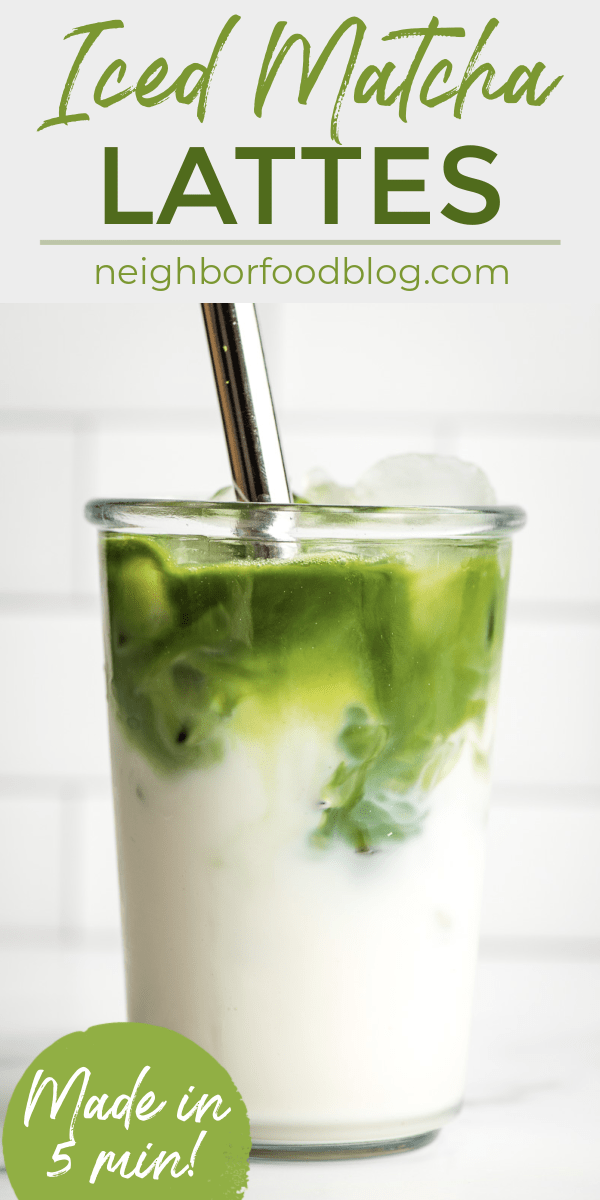

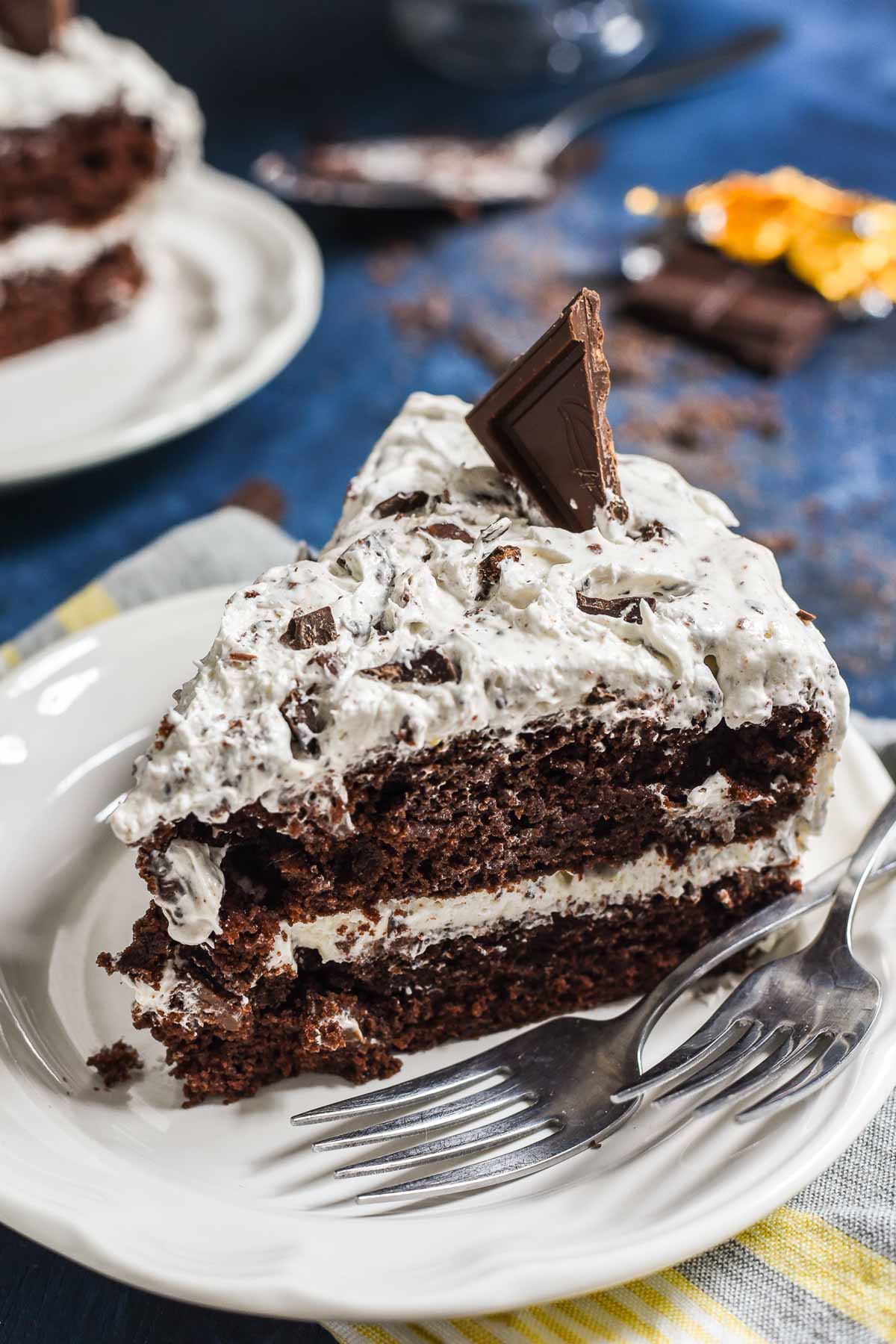

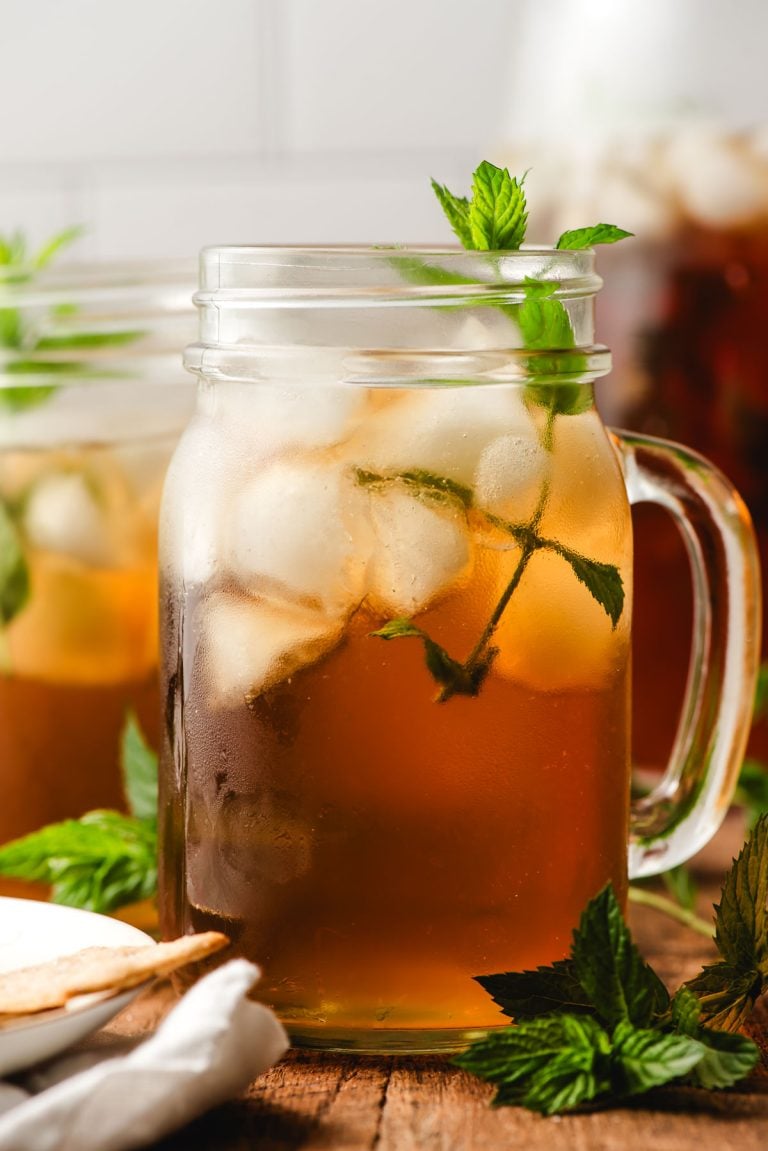
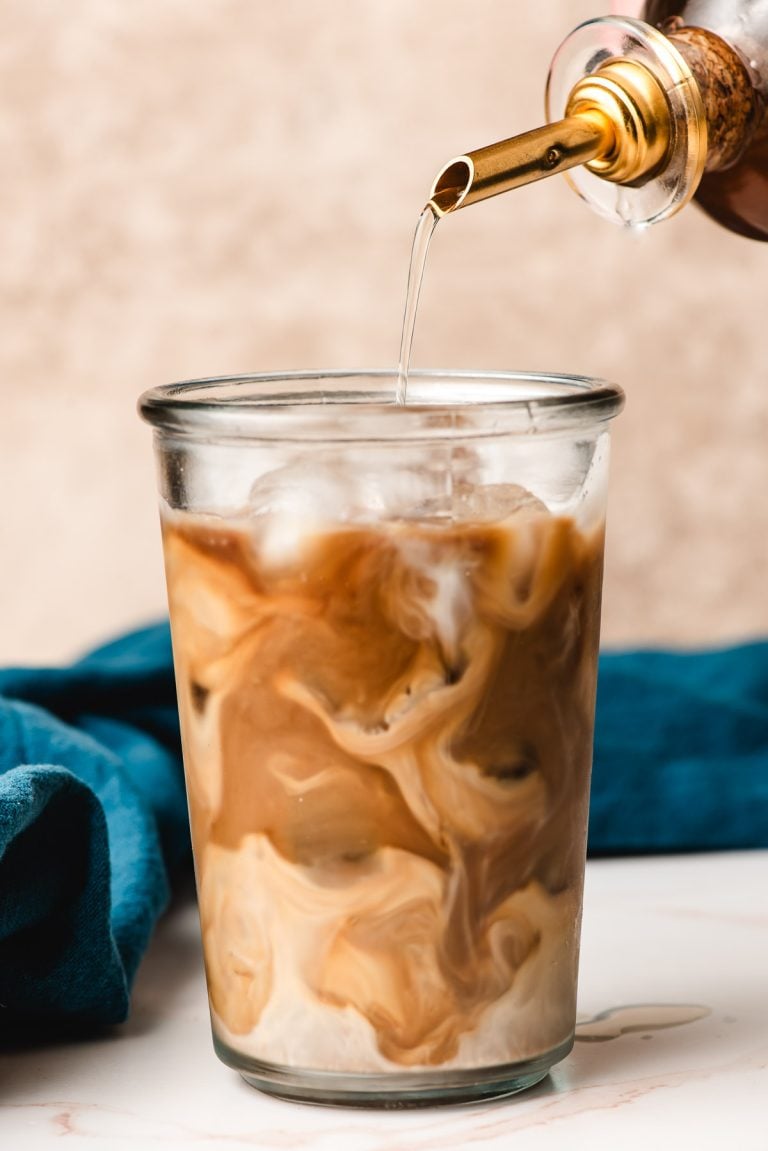
Leave a Reply